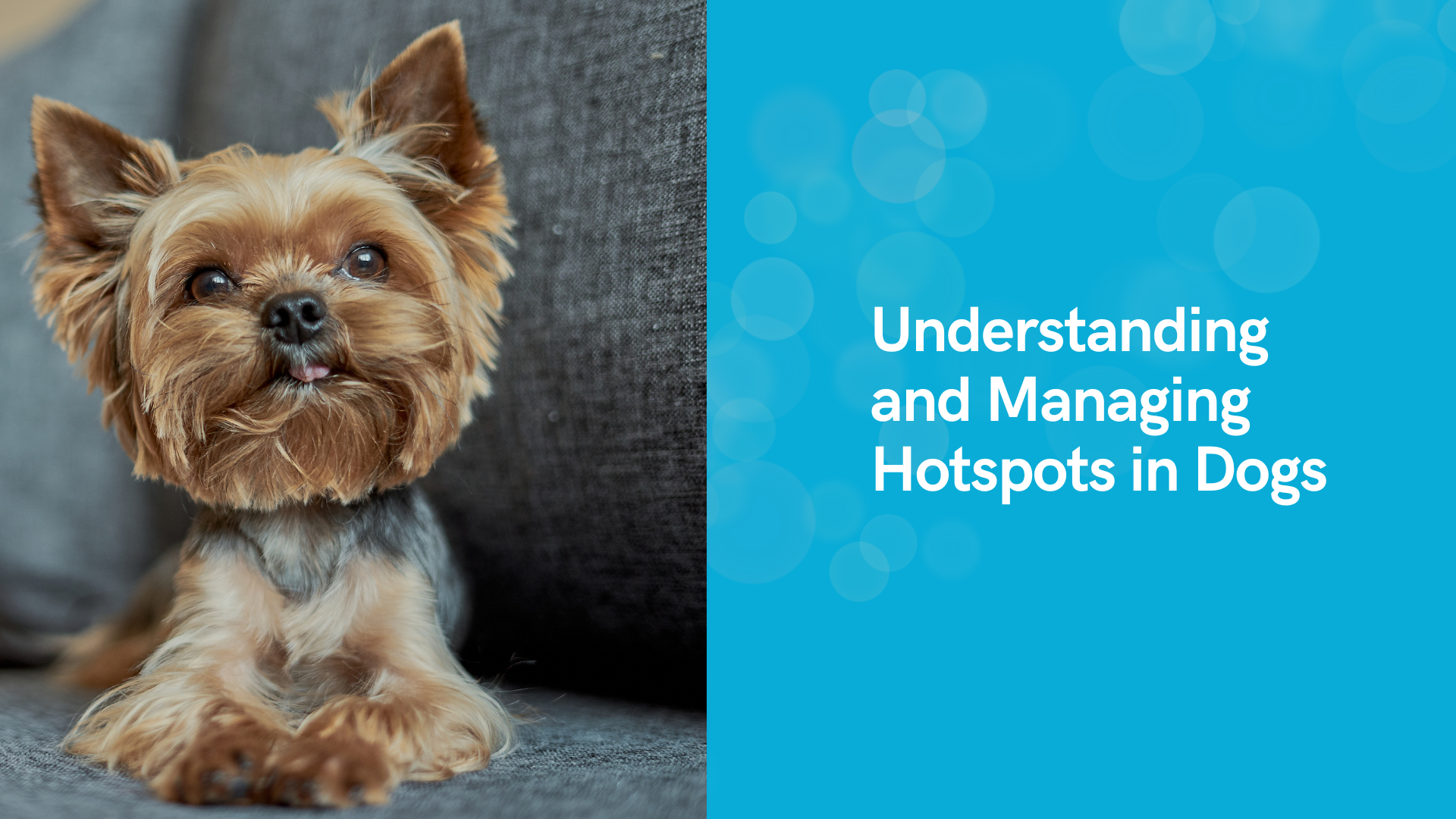Hotspots, also known as acute moist dermatitis, are a prevalent and often painful skin condition affecting many dogs. Characterized by red, inflamed, and moist areas of skin, hotspots can cause significant discomfort and distress to your furry friend. These irritated patches can appear suddenly and may rapidly worsen due to your dog’s instinct to lick, bite, or scratch the affected area. Understanding the causes, recognizing the symptoms early, and knowing how to treat and prevent hotspots are crucial steps in ensuring your dog remains healthy, comfortable, and happy.
What Are Hotspots?
Hotspots are localized areas of skin inflammation and infection that can develop rapidly on your dog’s skin. Known medically as acute moist dermatitis, these hotspots appear as red, inflamed, and often moist patches that cause significant discomfort. Dogs may exacerbate the condition by continuously licking, biting, or scratching the affected area, which can lead to further irritation and infection. Common signs of hotspots include:
- Swelling: The affected area may become swollen and tender to the touch.
- Hair Loss: The hair around the hotspot often falls out or is pulled out by the dog.
- Discharge: The lesion may ooze pus or a clear fluid, indicating an infection.
- Odor: Hotspots can emit a foul smell due to the bacteria thriving in the moist environment.
Hotspots can vary in size and severity, ranging from small irritated areas to large, painful lesions that require medical attention. The rapid onset of these skin conditions makes it essential for pet owners to be vigilant and address any signs of hotspots promptly. Early detection and treatment are key to preventing further complications and ensuring your dog’s comfort and health. Regular grooming and monitoring of your dog’s skin can help identify hotspots early, allowing for swift and effective treatment.
Causes of Hotspots
Hotspots in dogs can be triggered by a variety of factors, and understanding these causes is crucial for effective prevention and treatment. Several common causes include:
- Allergies: Environmental allergens such as pollen, mold, and dust mites, as well as food sensitivities, can lead to skin irritation and the development of hotspots. Flea bites are a particularly common allergen, causing intense itching and scratching.
- Poor Grooming: Dogs with matted fur or those not regularly groomed are more susceptible to hotspots. Mats and tangles can trap moisture and bacteria against the skin, creating an ideal environment for infection.
- Underlying Health Issues: Conditions such as hypothyroidism, hip dysplasia, or arthritis can make dogs more prone to excessive licking and chewing due to discomfort or pain, leading to the formation of hotspots.
- Environmental Factors: Warm and humid weather can contribute to the formation of hotspots, as moisture and heat create a breeding ground for bacteria. Dogs that swim frequently or are exposed to wet conditions are also at higher risk.
Other contributing factors may include insect bites, skin injuries, and stress or boredom, which can lead to excessive licking and chewing. By identifying and addressing these underlying causes, pet owners can significantly reduce the risk of hotspots and keep their dogs healthy and comfortable. Regular grooming, allergy management, and providing a stress-free environment are essential steps in preventing this painful condition.
Treatment and Prevention
Treating hotspots involves a combination of immediate care and preventive measures to ensure they do not recur. Here are some steps for effective management:
- Immediate Care: Begin by trimming the hair around the hotspot to allow the area to breathe and prevent further irritation. Clean the affected area gently with a mild antiseptic solution to remove any debris and bacteria. Keeping the hotspot dry is crucial to prevent bacterial growth.
- Medication: In more severe cases, a visit to the veterinarian may be necessary. Your vet might suggest antibiotics to combat infection and anti-inflammatory medications to reduce swelling and discomfort. Topical treatments like medicated creams or sprays can also be used to soothe the irritated skin.
- Prevention Tips:
- Regular Grooming: Ensuring your dog is groomed regularly helps prevent mats and tangles that can trap moisture and bacteria against the skin.
- Flea Prevention: Use flea preventatives consistently to protect your dog from flea bites, a common trigger for hotspots.
- Healthy Diet: A well-balanced diet rich in essential nutrients supports overall skin health and can reduce the likelihood of hotspots.
- Allergy Management: Identify and manage any environmental or food allergies your dog may have. This might involve changes in diet, the use of hypoallergenic products, or allergy medications from your vet.
- Monitoring and Early Intervention: Regularly check your dog’s skin for early signs of hotspots. Promptly addressing any small lesions before they worsen can prevent serious infections.
By following these treatment and prevention strategies, pet owners can effectively manage hotspots and ensure their dogs remain healthy and comfortable. Regular veterinary check-ups are also essential to address any underlying health issues that might contribute to the formation of hotspots.
The Best Care And Treatment For Hotspots STarts Here
Hotspots are a common but manageable condition that can significantly impact your dog’s comfort and health. By understanding what hotspots are, recognizing the causes, and implementing effective treatment and prevention strategies, you can help keep your furry friend happy and healthy. Regular grooming, proper flea prevention, and managing allergies are essential steps in preventing hotspots. If you’re in Frisco, McKinney, Plano, or surrounding areas and notice signs of hotspots in your dog, don’t hesitate to seek professional help.
Book an appointment with PetNest Animal Hospital today to ensure your dog receives the best care and treatment for hotspots and other skin conditions. Your pet’s health and well-being are our top priority.

PetNest Animal Hospitalhttps://petnestanimalhospital.com/
